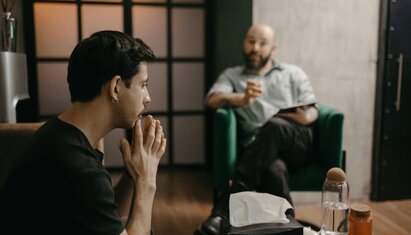Narrative therapy worksheets

Published September 3, 2025

Social anxiety worksheets help clients strengthen their coping strategies in social situations and ease symptoms of anxiety.
This article provides therapists with an overview of social anxiety, examples of activities to ease social anxiety, and tips on how to use our social anxiety worksheets with clients.
We’ve also included a free downloadable social anxiety worksheets PDF to save to your electronic health record (EHR) for repeated use with clients.
Social anxiety is a common type of anxiety disorder affecting about 12% of American adults at some point in their lives, particularly people born female.
Individuals with social anxiety disorder experience anxiety in social or public situations where they fear they might be judged, scrutinized, humiliated, evaluated, or rejected by others.
Social anxiety is not limited to public speaking or social conditions; it also relates to everyday activities like eating or drinking in front of others or using a public restroom.
When in social or public situations, symptoms include:
Blushing, sweating, or trembling
Rapid heart rate
Rigid body posture
Talking in a faint or overly soft voice
Feeling like your mind is going blank
Difficulty making eye contact, talking to people you don’t know, or being in a social situation even if you know the people
Nausea or feeling “sick to your stomach”
Feeling self-conscious or fearing judgment, criticism, or humiliation
Avoiding social situations or public environments
It is not known precisely how social anxiety occurs. However, it can run in families, and scientists are researching the role of stress and environmental factors in the development of the disorder.
Another factor to consider is that social anxiety and neurodivergence commonly co-occur. It's estimated as many as 50% people with autism also experience social anxiety.
Some experts say this is due to misdiagnosis of social anxiety when, in fact, the individual is masking autism.
Psychologist Megan Anna Neff, PsyD, suggests routine screening for autism when diagnosing social anxiety.
There are various interventions to support individuals with social anxiety, such as CBT and mindfulness practices included in a CBT for social anxiety worksheets PDF. CBT is an effective treatment for social anxiety, with higher response rates than other treatments, and can be a useful alternative to medication.
CBT exercises for social anxiety might include:
Social anxiety worksheets, such as a thought record or putting thoughts on trial worksheet, can be helpful tools to identify negative thought patterns and evaluate the accuracy of thoughts and core beliefs.
These activities also support restructuring thoughts into more adaptive thinking.
Behavioral activation exercises like activity scheduling combine enjoyable activities with a social element to counteract any social avoidance and increase evidence of positive social experiences.
The social anxiety worksheets PDF includes an example calendar that clients can use to schedule their own activities.
This CBT technique helps clients examine how a situation can impact their thoughts, emotions, and behaviors.
It consists of:
A (Activating Event): The situation that triggers an adverse reaction.
B (Beliefs): The thoughts, attitudes, or interpretations about the event.
C (Consequences): The emotional or behavioral responses that result from these thoughts and beliefs.
Mindfulness exercises to improve the symptoms of social anxiety may include:
This involves focusing on slow, controlled breaths (breathing in for four counts, holding for four counts, and breathing out for four counts).
One grounding technique is to use the 5-4-3-2-1 method to engage your senses (name five things you can see, four things you can touch, three things you can hear, two things you can smell, and one thing you can taste).
Progressive muscle relaxation involves tensing and releasing muscle groups to reduce tension.
We’ve included detailed instructions for these activities in our social anxiety worksheets PDF that you can download at the top of this article.
Therapists can download and use the social anxiety worksheets in several ways:
Print or screen share the social anxiety worksheets and use them as psychoeducational prompts
Guide the client through a social anxiety exercise during a session
Give or email the social anxiety worksheets PDF to the client to remind them of what you discussed during therapy
Ask the client to practice exercises between sessions and report their progress at their next therapy appointment
Goldin, P., Ramel, W., & Gross, J. (2009). Mindfulness Meditation Training and Self-Referential Processing in Social Anxiety Disorder: Behavioral and Neural Effects. Journal of cognitive psychotherapy.
Hofmann, S. G., Asnaani, A., Vonk, I. J. J., Sawyer, A. T., & Fang, A. (2012). The Efficacy of Cognitive Behavioral Therapy: A Review of Meta-analyses. Cognitive Therapy and Research.
Maddox, B. B., & White, S. W. (2015). Comorbid Social Anxiety Disorder in Adults with Autism Spectrum Disorder. Journal of autism and developmental disorders,.
National Institutes of Mental Health. (2022). Social Anxiety Disorder: More Than Just Shyness.
National Institute of Mental Health (NIMH). (n.d.). Social Anxiety Disorder.
Neff, M, A. (n.d.). Social anxiety vs Autism. Neurodivergent Insights.
Yale Medicine. (n.d.). Social anxiety disorder.
Spain, D., Sin, J., Linder, K. B., McMahon, J., & Happé, F. (2018). Social anxiety in autism spectrum disorder: A systematic review. Research in Autism Spectrum Disorders.
Sokol, K., Fox, M, G. (2019). The comprehensive clinician's guide to cognitive behavioral therapy. PESI Publishing.
Yoshinaga N, et al. (2016). Cognitive behavioral therapy for patients with social anxiety disorder who remain symptomatic following antidepressant treatment: A randomized, assessor-blinded, controlled trial.
SimplePractice is HIPAA-compliant practice management software with everything you need to run your practice built into the platform—from booking and scheduling to insurance and client billing.
If you’ve been considering switching to an EHR system, SimplePractice empowers you to run a fully paperless practice—so you get more time for the things that matter most to you.
Try SimplePractice free for 30 days. No credit card required.
Proudly made in Santa Monica, CA © 2025 SimplePractice, LLC
Proudly made in Santa Monica, CA © 2025
SimplePractice, LLC